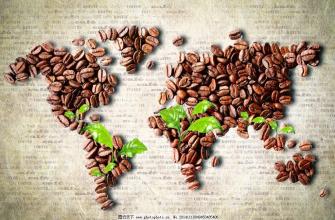A brief introduction to the flavor and taste characteristics of Ethiopian Sidamo Chiso Coffee, which has the most unique flavor.

The biggest advantage of the area is that the soil fertility is maintained through the circulation of organic matter, using the withered leaves of the surrounding trees or the residual roots of the plants as fertilizer. Therefore, the coffee produced in cities and towns has obvious differences and characteristics. In 2010-2012, it continuously obtained the high score of CR92~94, the authoritative coffee evaluation website in the United States. Thus it can be seen that the extraordinary and rare water-washed high-quality Elaraby plus coffee in this producing area is suitable for all degrees of baking, showing a fresh and bright aroma of flowers and fruits, beautiful and complete bean shape, which is incomparable to the general mocha. It has unique fruit aromas of citrus and lemon, with aromas of jasmine, sour taste similar to wine, clean and unmixed taste, just like freshly boiled citrus fruit tea with a long finish. Full of floral and citrus aroma, the performance is exciting, moderate roasting has a soft sour taste, deep roasting gives off a strong aroma, rich and uniform taste is the most attractive feature of Ethiopian Yega snow coffee, known as the best coffee beans in Ethiopia, is the representative of East African boutique coffee, and Yega snow coffee is the most unique coffee in the world today.
Ethiopia is rectangular, with a ratio of length to width of 3:2. From top to bottom, it is composed of green, yellow and red parallel equal horizontal rectangles, with the national emblem in the middle of the flag. Since the end of the 19th century, Ethiopia began to use the green, yellow and red cross-striped national flag. In modern history, Ethiopia is the first African country to join the forest of free nations. [8]
In the fifties and sixties of this century, many African countries became independent one after another and adopted green, yellow and red as the colors of the national flag, so they were called "pan-African colors". Ethiopia is one of the ancient countries in Africa, with a long history of more than 3000 years, giving green, yellow and red colors deeper roots in this land. Historically, they are closely related to the liturgy of the Coptic church, and are worshipped as the symbol of the trinity of the Father, the son and the Holy Spirit, reflecting the three virtues of loyalty, hope and kindness advocated by human freedom. These three colors also represent three regions of Ethiopia: Tikleh (red), Amhara (yellow) and Theo (green). Green represents fertile land, mild climate and rich plant resources, as well as hope for the future; yellow symbolizes peace and fraternity, as well as the people's determination to build the country; and red symbolizes that the people are ready to shed blood and sacrifice to defend the motherland.
There is no national emblem on the original national flag. The Federal Democratic Republic of Ethiopia was established on August 22, 1995, and the national emblem was added to the center of the new national flag in 2000. since EGF came to power, it has established a federal regime based on regional national autonomy, focusing on economic development, pay attention to the coordination of relations among stability, development and national unity. [1]
Constitution
On 8 December 1994, the Ethiopian Constituent Assembly adopted the fourth Constitution, the Constitution of the Federal Democratic Republic of Ethiopia, which entered into force on 22 August of the following year. The new constitution consists of 11 chapters and 106 articles, which stipulates that Ethiopia is a federal state with a separation of powers and a parliamentary system. The president is the head of state for a term of six years. The Prime Minister and the Cabinet have the supreme executive power, and the cabinet is jointly formed by the majority parties or political alliances and is collectively accountable to the people's House of Representatives.
All ethnic groups have equal autonomy and enjoy the right of national self-determination and secession. after the legislative body of any nation has adopted the request for separation by a majority of 2%, the federal government should organize the ethnic group to conduct a referendum within 3 years, and the majority can secede from the federation. Each state can use its own language to work for the state. Private property is protected, but the state has the right to expropriate for a fee. Urban and rural land and natural resources shall be owned by the state and may not be bought, sold or transferred. A multi-ethnic national army and police force shall be established, and the army shall not interfere in politics. Safeguard citizens' democratic freedoms and fundamental rights
The coffee in Sidamo has a variety of flavors. Different soil types, microclimates and countless native coffee species, towering mountains, highlands, plateaus, valleys and plains, diverse topography, and the geology of the area belongs to nutrient-rich, well-drained volcanic soil. the depth of the soil is nearly two meters, and the surface soil is dark brown or brown. The biggest advantage of the area is that the soil fertility is maintained through the circulation of organic matter, using the withered leaves of the surrounding trees or the residual roots of the plants as fertilizer. Therefore, the coffee produced in cities and towns has obvious differences and characteristics. In 2010-2012, it continuously obtained the high score of CR92~94, the authoritative coffee evaluation website in the United States. Thus it can be seen that the raw beans in this area are extraordinary. Sidamo coffee is very diverse in flavor. Different soil types, microclimates and countless native coffee species, towering mountains, highlands, plateaus, valleys and plains, diverse topography, and the geology of the area belongs to nutrient-rich, well-drained volcanic soil. the depth of the soil is nearly two meters, and the surface soil is dark brown or brown.
Important Notice :
前街咖啡 FrontStreet Coffee has moved to new addredd:
FrontStreet Coffee Address: 315,Donghua East Road,GuangZhou
Tel:020 38364473
- Prev

Flavor description of Ethiopian Sidamo Chiso Coffee A brief introduction to the planting of the Manor production area
There are several other coffee cooperation organizations in Gima, where members share water and fertilizers, and few members are deprived of their wages under their organizations and provide health insurance for each member. There are about 21000 hectares of state-owned farms, and there are five large farms located in TEPI and BEBEKA. The area is near Gima, but most of them belong to lower areas, and each single farm is at least
- Next

Huigan chic Coffee Coffee flavor and taste description A brief introduction of Fine Coffee in Manor
Thus it can be seen that Sidamo grows in the southernmost Ethiopian Plateau between 4600 and 7200 feet above sea level (Sidamo Province). It is a famous boutique coffee area in southern Ethiopia, bordering Kenya, southeast of Gemma, just south of the capital, usually sweet and loved by most people. its annual output is about 225000 bags / 60kg, and the bean body is more than Longber.
Related
- Detailed explanation of Jadeite planting Land in Panamanian Jadeite Manor introduction to the grading system of Jadeite competitive bidding, Red bid, Green bid and Rose Summer
- Story of Coffee planting in Brenka region of Costa Rica Stonehenge Manor anaerobic heavy honey treatment of flavor mouth
- What's on the barrel of Blue Mountain Coffee beans?
- Can American coffee also pull flowers? How to use hot American style to pull out a good-looking pattern?
- Can you make a cold extract with coffee beans? What is the right proportion for cold-extracted coffee formula?
- Indonesian PWN Gold Mandrine Coffee Origin Features Flavor How to Chong? Mandolin coffee is American.
- A brief introduction to the flavor characteristics of Brazilian yellow bourbon coffee beans
- What is the effect of different water quality on the flavor of cold-extracted coffee? What kind of water is best for brewing coffee?
- Why do you think of Rose Summer whenever you mention Panamanian coffee?
- Introduction to the characteristics of authentic blue mountain coffee bean producing areas? What is the CIB Coffee Authority in Jamaica?

